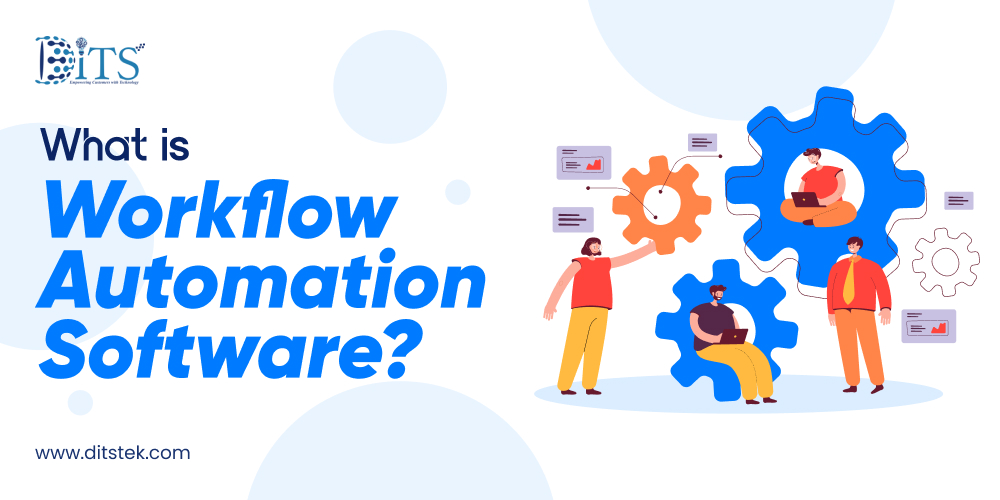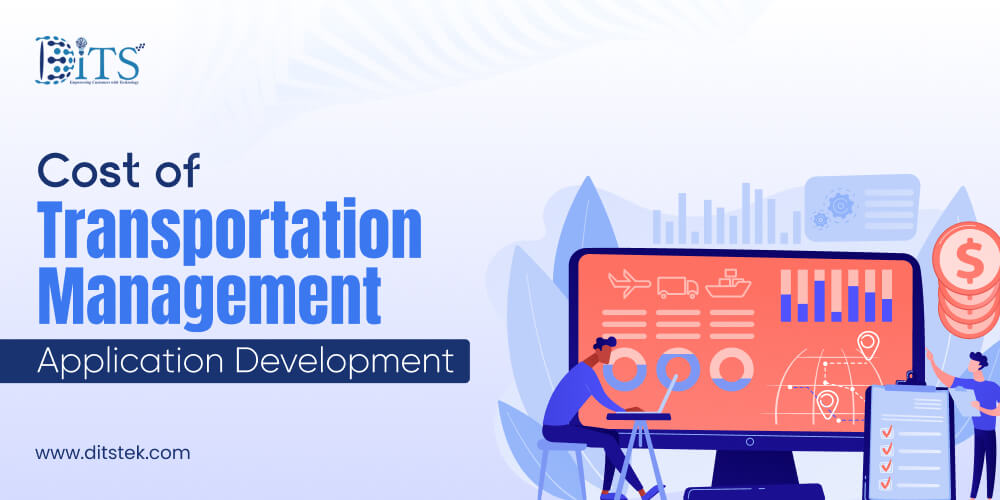How to Develop Fleet Maintenance Software for Small Business
Table Of Contents
Published Date :
27 Jun 2025
Managing a fleet of commercial vehicles is challenging for most transportation companies. It involves managing multiple tasks simultaneously and keeping track of numerous tasks and activities. Even for industry professionals, it can be challenging to keep up with changing market trends and rising costs.
Things become challenging, especially for small businesses, as they have limited budgets and resources. Keeping the business running is tough without a proper system that can track every major and minor issue in vehicles. With rising fuel costs, vehicle maintenance costs, and labor costs, small business owners need to shift toward using technology to overcome these challenges.
However, with changing trends and evolving demand, many advanced tools and technologies have helped businesses reduce costs, manage risks, and achieve business growth. One such tool is fleet maintenance software for small businesses. In this blog, we will explain how to develop fleet maintenance software for small businesses and how it helps them minimize costs and maintain efficiency.
What is Fleet Maintenance Software for Small Business?
A fleet maintenance software for small businesses uses IoT technology to fetch vehicle maintenance data from vehicles or directly from their engines. It collects the data from the sensors installed at various parts of a vehicle or directly from an electronic control unit (ECU) installed in every vehicle. The software collects the data about engine condition, malfunctioning of spares and issues in working of vehicles, and sends it to a dashboard from where fleet managers identify any issues and create a maintenance schedule for vehicles.
The data also includes reports on engine hours, mileage of vehicles, present and potential issues related to the working of vehicles. In addition to collecting data, some fleet maintenance software also creates alerts for maintenance and specific issues that need attention.
Now, any software works best only when developed by an experienced custom software development company like Ditstek Innovations (DITS). The development team should have relevant expertise and experience in building fleet maintenance solutions for organizations. At DITS our team builds fleet management and maintenance software for businesses including transportation & logistics companies.
Build Custom Software to Avoid Costly Fleet Downtime!
From engine data capture to real-time alerts, we develop fleet maintenance software to ensure you stay miles ahead of problems.
Fleet Maintenance Software Market Overview
Fleet maintenance software is becoming essential for businesses of all sizes trying to extend vehicle life, cut repair costs, and stay on schedule. The global fleet maintenance software market is expected to witness steady growth, projected to reach USD 8.5 billion by 2030, with a CAGR of around 9–10%. This surge is fueled by:
- The rise in vehicle ownership across industries
- Growing focus on preventive vs. reactive maintenance
- Regulatory push for vehicle inspections and documentation
- Increased demand for data-driven upkeep and reporting
While enterprise-grade platforms dominate the market, small businesses are now actively seeking lightweight, cost-effective solutions that still offer real-time alerts, service scheduling, and maintenance history tracking.
What does this mean for software developers? There’s a clear gap in the market for affordable, scalable, and user-friendly fleet maintenance tools tailored for small and mid-sized operations. Building for this niche opens up big opportunities.
Steps to Build Fleet Maintenance Software for Small Business

Developing Fleet maintenance software requires careful planning and execution by an experienced team of transportation software developers. Here is the step-by-step process for developing fleet maintenance software for small businesses:
Identifying Core Functionalities
The development of a fleet maintenance system starts with identifying core functionalities. It starts by choosing the key features a business wants in the solution. This includes tracking and monitoring modules, analytics, and maintenance schedules tailored to business requirements.
Determine the End Users
Every software solution is made for end users. The business should know exactly who their end users are and understand their needs. In the case of fleet maintenance software, the end users are fleet managers, drivers, dispatchers, administrators, and maintenance staff. Fleet managers want comprehensive dashboards, drivers need an easy-to-use interface for navigation, and maintenance staff need vehicle service alerts and schedules.
Select a Technology Stack
Then, determine the technology stack for the software, including programming languages, frameworks, and databases. Scalability, security, and compatibility with future updates must be considered. Emerging technologies such as telematics, AI, AR/VR, and IoT can be researched for potential advantages. The best-fit tech stacks must be used to develop state-of-the-art fleet management software solutions.
Search for Software Development Partner
Before development starts, it is essential to find a technical partner like DITS (Ditstek Innovations) with expertise in developing top-tier fleet management software solutions. An experienced software development team will back you with the right choices to embed business logic in the solution and build it to be scalable and robust.
Develop UI/UX design
After all the preparation, the development team defines how the various software components will interface with each other. They will set an architectural pattern (monolithic or microservices) and plan how data flows and APIs are designed, taking into consideration scaling and fault tolerance strategies.
Ensure Security Measures
The development team needs to collaborate with your cybersecurity specialists to develop fleet maintenance software with strong security algorithms to protect sensitive information such as vehicle locations and driver details.
Development of Core Functionalities
While developing the software, the development team can start programming its core functionalities. At this stage, the development team should implement real-time tracking of malfunctions, mileage, reporting, emergency alerts, and other related features. Security measures must also be considered a priority in alignment with vehicle maintenance needs.
User Authentication and Authorization
During the software development process, user authentication needs to be provided and implemented securely to manage system access and define different user level rights and privileges (administrators, drivers, managers, etc.)
Testing
QA specialists conduct various testing to ensure the software's reliability and the absence of bugs. The tests involve unit tests, integration tests, systems tests, and user acceptance tests. Consider also the possibilities of QA testing with automation tools to make the process smooth and ensure thorough coverage.
Deployment
Deployment involves installing production environments, configuring servers, and deploying a final custom fleet maintenance solution. Ensure the software development team uses CI/CD pipelines to perform the automatic deployment so that updates can proceed quickly and without hiccups.
Maintenance
Maintenance ensures the software program's continued functioning and enables it to stay current. You monitor the system for issues, apply security patches, update features according to user input, and accommodate the business's ever-changing needs. A continuous maintenance cycle eliminates preventable downtime and keeps the software relevant for fleet management.
Curious How Software Can Cut Fleet Costs?
Learn how custom-built fleet maintenance software helps you control fuel, repairs, and performance without the overhead of complex systems.
Must-Have Features in Fleet Maintenance Software for Small Businesses

When building fleet maintenance software for small businesses, simplicity, clarity, and real value matter most. Here are the core features that make the difference between “just another tool” and one they can’t operate without:
1. Vehicle Service Scheduling: Automatically track service intervals based on mileage, engine hours, or time. This feature eliminates the need of relying on memory or messy spreadsheets.
2. Maintenance History Logs: Keep detailed records of all repairs, inspections, part replacements, and service vendors.
3. Real-Time Alerts & Reminders: Send automated alerts for oil changes, tire rotations, brake checks, or license renewals. This helps keep vehicles safe and compliant.
4. Parts & Inventory Tracking: Help teams avoid last-minute scrambles by tracking parts inventory levels and linking them to specific service tasks.
5. Driver Reports & Inspections: Enable drivers to log daily vehicle checks, report issues on the go, and attach photos.
6. Cost Tracking & Reporting: Track maintenance spend per vehicle, calculate cost-per-mile, and generate reports to spot cost leaks or high-maintenance assets.
7. Mobile Access: A must-have for field teams like mechanics and drivers should be able to access or update data right from their phones.
8. Integration with GPS/Telematics: Combine maintenance data with real-time vehicle usage.
9. User Roles & Permissions: Small teams still need access control. Make it easy to define who sees what like a driver, mechanic, fleet manager, or admin.
10. Cloud-Based & Scalable: A cloud-first system ensures secure access, easier updates, and future scalability.
How to Implement AI into Your Fleet Maintenance Software System

AI can help predict failures, optimize maintenance schedules, and reduce downtime. Here's how to bring AI into your fleet maintenance solution:
1. Start with the Right Data
AI is only as smart as the data it learns from. Begin by collecting data from:
- OBD-II and telematics devices
- Service history logs
- Driver inspection reports
- Real-time sensor data (e.g., tire pressure, engine temperature)
2. Use Predictive Maintenance Algorithms
Leverage machine learning to identify patterns in vehicle performance. AI can:
- Detect anomalies before a breakdown
- Forecast part failures based on usage trends
- Optimize maintenance intervals (no more over- or under-servicing)
3. Integrate Natural Language Processing (NLP)
Allow mechanics or drivers to describe issues in plain English (via text or voice). NLP can:
- Classify maintenance issues
- Suggest fixes or link to previous similar cases
- Route requests to the right technician or vendor
4. Automate Decision-Making
AI can assist with:
- Auto-scheduling service appointments based on urgency
- Assigning the best nearby workshop
- Estimating cost and downtime for specific repairs
5. Enable AI-Driven Dashboards
Use AI to surface actionable insights like:
- Which vehicles are at highest risk?
- What parts fail most often?
- Which routes cause more wear and tear?
6. Choose the Right Tech Stack
Integrate AI tools and frameworks like:
- TensorFlow, PyTorch (for custom models)
- AWS SageMaker, Azure ML, or Google AI (for managed ML services)
- Use Python or Node.js with AI libraries for backend integration
Ditstek Innovations also works on AI software development, which enables us to implement AI into fleet maintenance solutions for transportation and logistics companies. AI helps fleet maintenance managers to predict vehicle issues automatically, by receiving alerts and notifications on a dashboard. This helps them create maintenance schedules proactively and address potential issues to keep the vehicles in good working condition.
How Much does Fleet Maintenance Software Cost?
Businesses looking to develop a fleet maintenance software usually want to know the development cost in advance. Actually, the cost of development depends on multiple factors such as design, complexity of solution, team size and any specific features required. However, fleet maintenance software development costs around $50,000 for software with basic features suitable for small and medium businesses.
This can go up to $500,000 depending on the features, functionality, number of users and software versions. For a personalized estimate of the fleet maintenance software cost, businesses can contact Ditstek Innovations to discuss their project and requirements for which they want to develop fleet maintenance software.
Looking to Build Fleet Software in Budget?
Don’t overpay for features you’ll never use. We help small businesses develop efficient, cost-effective fleet maintenance solutions.
How DITS Can Help with Fleet Maintenance Software Development?
Ditstek Innovations has years of experience and strong domain knowledge in designing and developing fleet management and maintenance software for businesses. Our software development team has deep knowledge about how transportation fleet operates and addresses it with advanced features such as real time visibility, predictive maintenance, and cost controls.
With a client retention rate of 97% and 100% client satisfaction, DITS can help businesses looking for long-term growth and operational perfection in technology. If you are looking to build fleet maintenance software, you can visit our website and fill the contact us form, and our team will get back to you.
FAQs
Q1. Why small businesses need fleet maintenance software?
Typically, small businesses operate on scarce resources. Such software aids in tracking vehicle health, scheduling their maintenance, preventing breakdowns, cutting down costs of operations, and ensuring the smooth flow of fleet operations without manual errors.
Q2. What features do you offer in fleet maintenance software?
At Ditstek Innovations, we offer vehicle tracking, scheduling maintenance works, receiving of alerts, monitoring of fuel, service histories, and dashboard analytics in fleet management software. These features ensure timely repairs, reduce downtime, and helps in decision-making.
Q3. How long do you take to develop fleet maintenance software?
The timeline depends on various factors such as project complexity, required features, and the size of a development team. For a basic app, we require a time period of 3 to 6 months; however, it may take longer for sophisticated technological solutions with advanced features.
Q4. Do you offer customization of software as per business requirements?
Yes, at Ditstek Innovations, we offer customized fleet maintenance software solutions for our client. At DITS, we develop the solution to fit your individual operational requirements and business workflows to help you keep up your vehicles in perfect condition.
Q5. Can small businesses afford fleet maintenance software?
Yes, small businesses can begin with a minimal version tailored to their needs and scale the software as they grow. This makes it a cost-effective investment for long-term efficiency.
Q6. How much does fleet management software cost?
The cost of fleet management software depends on the features and complexity of the software. The average cost starts from $50,000 that is suitable for small businesses. The cost can go up to $500,000 with more features and usable for thousands or lakhs of users for medium and large businesses.

Dinesh Thakur
21+ years of IT software development experience in different domains like Business Automation, Healthcare, Retail, Workflow automation, Transportation and logistics, Compliance, Risk Mitigation, POS, etc. Hands-on experience in dealing with overseas clients and providing them with an apt solution to their business needs.
Recent Posts

Workflow automation software enables businesses to automate tasks, streamline operations, boost productivity, and reduce manual effort with ease.

Learn the automotive software development cost breakdown. Discover key pricing factors to help plan your budget and invest wisely in custom automotive software.

A practical breakdown of transportation management application development costs, covering scope, technology, and strategic choices that shape budgets and long term operational value for businesses.
